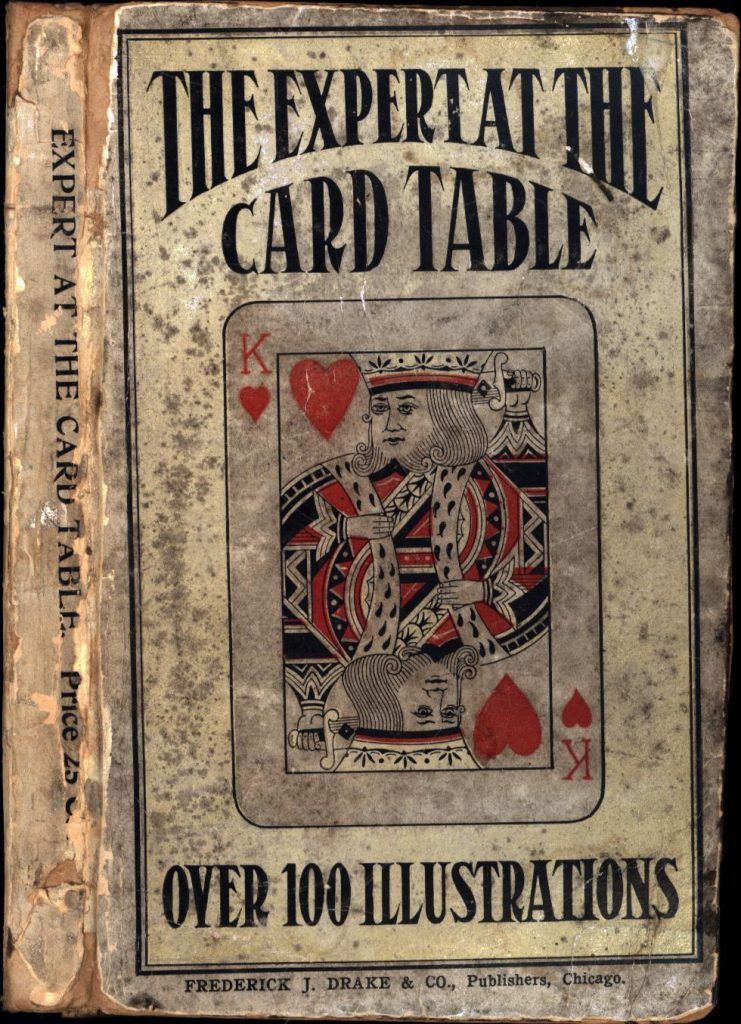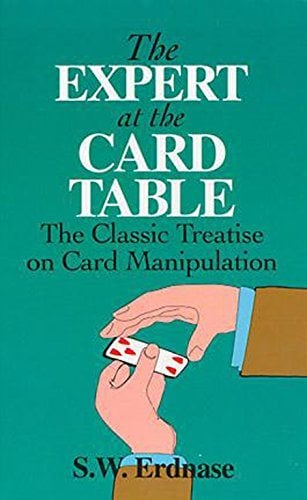Why “The Expert at the Card Table” Remains Essential Reading for Card Enthusiasts

The Impact and Influence of a Legendary Book
S. W. Erdnase’s The Expert at the Card Table is revered within the world of card manipulation, especially among magicians and gambling experts. Since its initial publication in 1902, it has stood as a definitive guide to both conjuring illusions and the darker arts of card cheating. This dual focus, blending magic and strategy for dishonest play, has shaped how generations of performers and professionals approach the handling of playing cards.
While the book is primarily celebrated in magical circles, its lessons reach far beyond the realm of entertainers. For anyone who plays cards, whether casually or in high-stakes environments, understanding what’s possible “behind the scenes” can be both fascinating and enlightening. Even those with no intention of performing magic or cheating stand to gain vital insights into the craft and psychology of card handling.
Exploring the Book’s Unique Background and Structure
Upon its discreet debut in the early 20th century, The Expert at the Card Table caught little initial attention outside a small circle of enthusiasts. Over time, however, it was recognized as a groundbreaking work, largely thanks to endorsements from prominent magicians.

A key figure inspired by the book was Dai Vernon, one of the 20th century’s most innovative magicians. While the tricks described in the magic-focused section drew from established sources, the opening chapters-devoted to gambling and cheating-set the work apart. Erdnase’s writing is notable not just for the moves he describes, but for his meticulous, methodical breakdowns. Whether explaining finger placements for false deals or suggesting partnerships at the table, he offers detailed, nuanced instruction that reveals both technical finesse and strategic depth.
What the Book Covers-and What It Leaves Out
Erdnase’s treatise offers a dense collection of sleight-of-hand techniques and strategies for secretly controlling cards. However, the more advanced a reader’s knowledge, the more apparent it becomes that the book contains notable omissions.
Notable absences include:
- Complete false shuffles, since the book focuses mainly on partial deck manipulations rather than full-deck preservation.
- Cold decking (swapping in a prepared deck) is only briefly discussed, and Erdnase dismisses it as outside the bounds of sophisticated card work.
- Palm switches and advanced methods for circumventing the cut are not detailed or are barely mentioned, despite being used during Erdnase’s era.
- Several methods are omitted or merely hinted at, possibly because the author felt they were not his to reveal-or simply was unwilling to expose every secret he knew.
- Techniques such as "the spread," now seen as foundational, receive little to no attention, even though core underlying concepts are addressed in other contexts.
For all these gaps, the manual remains immensely respected for its structured approach and deep insights. Some of the material, especially advice on playing techniques and the psychology behind successful cheating, is still relevant to today’s card tables.
Learning How Card Cheats Think and Operate
It takes a certain persistence to get the most from Erdnase’s intricate prose, but there are major takeaways for any serious reader. By revealing how cards can be manipulated secretly-through culling, stacking, or sophisticated deals-the book provides a real appreciation for the skill and subtlety required by advanced cheaters.
Just as significant is the reminder that cooperation between cheaters (confederacy) often trumps technical skill. When multiple individuals work together, they can create advantages unobtainable by even the most advanced solo manipulator. This type of collusion was common in live games and, as online card rooms have grown, has become an area of concern for digital poker sites as well.
Anyone who plays cards for real stakes, online or in person, should be aware of how collaboration and surreptitious skill can influence outcomes at the table. The book delivers foundational knowledge to help players spot warning signs and understand the sophisticated thinking that accompanies cheating.
Is Erdnase Still Worth Reading Today?
Many of the card techniques described in The Expert at the Card Table have been improved over time, and contemporary cheaters now rely on methods undreamed of a century ago. However, the core lessons-both technical and psychological-remain deeply relevant.
For magic enthusiasts, the book is still seen as the gold standard for understanding classic sleight of hand with cards. For gamblers and regular players, it’s a fascinating window into how cheaters cultivate their edge. Even if some content is now dated, the book captures an era and an approach to card manipulation that remains essential for anyone who wants to understand the evolution of the craft.

If nothing else, Erdnase’s commentary on topics like marked cards and mechanical aids (“hold outs”) offers a glimpse of attitudes towards cheating and magic at the turn of the 20th century-ideas that still provoke debate and inspire innovation.
The Enduring Mystery of the Author’s Identity
No discussion of The Expert at the Card Table is complete without mention of its enigmatic author. S. W. Erdnase’s true identity has remained hidden for over a century, adding an extra layer of mystique to the volume. Various anagrams and theories have been proposed-“E. S. Andrews,” “W. S. Sanders,” and others-but none have been definitively proven.
This anonymity has only heightened the allure of the book, prompting both academic and amateur investigations, including documentary films exploring possible candidates. Some in the magic community feel that the sustained mystery contributes to the book’s aura. It’s not just the content, but also the question of authorship, that has kept fascination alive across generations.
In many ways, Erdnase’s work helped pioneer close-up magic performed at the table rather than onstage. His detailed treatments of cheating techniques empowered magicians to perform card miracles directly in front of audiences, blurring the line between demonstration and deception.
Conclusion: A Must-Read for Card Players, Magicians, and the Curious
Whether you’re serious about sleight of hand, interested in the mindset of card cheats, or simply drawn by the historical mystery shrouding one of gambling and magic’s most pivotal works, The Expert at the Card Table is an indispensable resource. While some tactics are now outmoded, its methodical approach and keen analysis remain invaluable to anyone studying card manipulation.
For those invested in card games or magic, this book stands as both a practical guide and a fascinating artifact of its time. With its rich history and enduring mystery, it’s a read that promises not only knowledge but inspiration-and perhaps a few surprises along the way.













